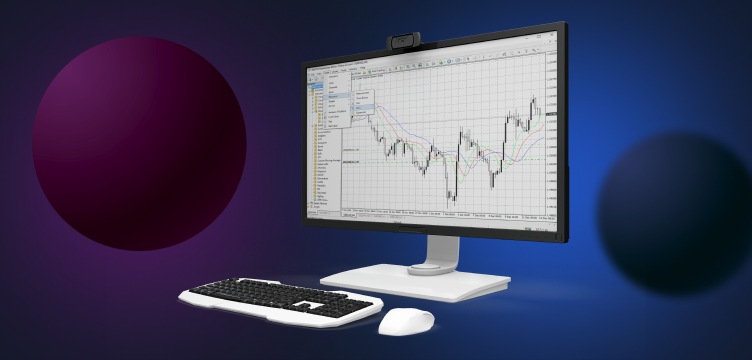The world of trading can be both exhilarating and intimidating, especially for those just starting out. One tool that has stood the test of time in helping traders manage their ventures is the mt4 trading platform, commonly known as MT4. This guide will take you through the essentials of mastering this powerful tool, ensuring you’re well-equipped to make informed trading decisions. Whether you’re a beginner or seeking to refine your skills, this article is designed with you in mind.
Introduction to MetaTrader 4
MetaTrader 4, often abbreviated as MT4, is one of the most popular trading platforms globally. Its user-friendly interface, combined with powerful analytics and trading capabilities, makes it a favorite among traders of all levels. If you’re looking to step into the world of trading or enhance your existing strategies, understanding MT4 is crucial.
The platform’s versatility is one of its greatest strengths. It caters to various trading strategies, whether you’re interested in forex, commodities, or indices. With MT4, you’ll have access to a plethora of tools and resources designed to streamline your trading experience. By the end of this guide, you’ll be equipped with the knowledge to maximize the potential of this platform.
Setting Up Your MT4 Account
Before you can begin trading on MT4, you’ll need to set up an account. This process is straightforward, but it’s important to ensure everything is correctly configured from the start. Begin by choosing a reputable broker that offers MT4 support. Research is key; read reviews, check their regulatory status, and understand the fees involved.
Once you’ve chosen a broker, download the MT4 software from their official website. After installation, you’ll need to log in using the credentials provided by your broker. Ensure you familiarize yourself with the platform’s interface, taking note of the various sections like Market Watch, Navigator, and the Toolbar.
Finally, it’s crucial to set up your account’s security measures. This typically involves enabling two-factor authentication and setting strong passwords. Security is paramount in trading to protect your investments and personal information.
Navigating the MT4 Interface
Understanding the MT4 interface is essential for efficient trading. At first glance, the platform may seem complex, but with a bit of time, you’ll find its layout intuitive. The main screen is divided into several sections, each serving a unique purpose.
The Market Watch window displays the symbols available for trading along with their bid and ask prices. You can customize this list to include only the instruments you’re interested in. The Navigator section is where you’ll find your accounts, indicators, expert advisors, and scripts. This area provides quick access to the tools you’ll frequently use.
The Toolbar offers quick access to essential features such as charting tools, order placement, and market analysis. Familiarizing yourself with these sections will enable you to quickly execute trades and analyze market trends efficiently.
Placing Orders on MT4
One of the key functions of MT4 is order placement, which is vital for executing trades in the market. To place an order, you can either use the New Order button on the toolbar or right-click on the chart of the instrument you wish to trade and select “Trading.”
There are several types of orders you can place, including market orders, limit orders, and stop orders. A market order is executed immediately at the current market price, while a limit order allows you to buy or sell an asset at a specified price or better. A stop order triggers a buy or sell action once the market reaches a certain price point.
Understanding these different order types and knowing when to use them is crucial for successful trading. It allows you to automate your trading strategy and manage risk effectively.
Utilizing Technical Indicators
Technical indicators are integral to the trading process, providing insights into market trends, volatility, and potential price movements. MT4 offers a wide range of built-in indicators, including moving averages, Bollinger Bands, and RSI.
To apply an indicator, simply drag it from the Navigator onto your chosen chart. You can customize the settings of each indicator to suit your trading strategy. For instance, adjusting the period of a moving average can change its sensitivity to price changes.
It’s advisable to experiment with different indicators and combinations to find what works best for your trading style. However, remember that no indicator is foolproof; they should be used in conjunction with other analysis techniques.
Customizing Your Charts
Charts are at the heart of trading on MT4, offering a visual representation of market data. Customizing your charts can enhance your trading experience and make analysis more efficient.
Begin by selecting your preferred chart type—bar, line, or candlestick. Each type offers unique insights; for example, candlestick charts provide detailed information about price movements within a specific timeframe.
You can also customize the appearance of your charts, including colors, grid lines, and background. This not only makes them more visually appealing but also ensures that important information stands out clearly.
Setting Up Alerts and Notifications
Staying updated on market movements is crucial for timely decision-making. MT4 allows you to set up alerts and notifications, ensuring you’re always informed.
To create an alert, right-click on the Terminal window and select “Alerts.” From here, you can specify conditions for when an alert should trigger, such as price levels or indicator values. You can choose to receive alerts via sound notifications, email, or even push notifications to your mobile device.
These alerts act as your trading assistant, allowing you to focus on other tasks while being confident you won’t miss important market events.
Backtesting Trading Strategies
Before implementing a new trading strategy, it’s wise to backtest it using historical data. MT4’s Strategy Tester is a powerful tool for this purpose, allowing you to test your strategies against past market conditions.
To use the Strategy Tester, select an expert advisor and set the parameters for testing. It’s important to use a realistic simulation, accounting for factors like spread and slippage. Analyzing the results helps you refine your strategy, identify potential weaknesses, and optimize performance.
Remember that while backtesting is useful, it doesn’t guarantee future success, as market conditions can change.
Managing Risk and Capital
Effective risk management is vital to long-term trading success. MT4 provides several tools to help you manage risk, such as stop-loss and take-profit orders. Setting these limits ensures that your trades close automatically at predetermined profit or loss levels, protecting your capital.
Another aspect of risk management is position sizing. It’s important to determine how much of your capital to risk on each trade. A common rule of thumb is to risk no more than 1-2% of your account balance on a single trade.
By managing risk effectively, you can protect your account from significant losses and ensure your trading strategy is sustainable.
Leveraging MT4 Expert Advisors
Expert Advisors (EAs) are automated trading systems that execute trades based on predefined rules. MT4 supports EAs, allowing you to automate your trading strategy and remove emotions from the decision-making process.
You can create custom EAs using the platform’s programming language, MQL4, or purchase pre-built EAs from the MT4 marketplace. It’s important to thoroughly test any EA before using it on a live account to ensure it performs as expected.
Automated trading can be a powerful tool, but it requires careful monitoring to adapt to changing market conditions.
Monitoring and Reviewing Your Trades
Consistent monitoring and reviewing of your trades are crucial for improving your trading skills. The Terminal window in MT4 provides a wealth of information about your open positions, trade history, and account balance.
Regularly reviewing your trades allows you to identify patterns, learn from mistakes, and refine your strategies. Keeping a trading journal can be particularly helpful, as it enables you to track your thought process and decision-making over time.
By continuously analyzing your performance, you can optimize your trading approach and achieve better results.
Conclusion
Mastering the MT4 trading platform is an essential step for anyone serious about trading. By understanding its features, customizing your workspace, and employing effective strategies, you can enhance your trading experience and improve your chances of success.
Remember, trading is a skill that requires continuous learning and adaptation. Stay informed about market trends, be disciplined in your approach, and always prioritize risk management. With dedication and practice, you’ll be well on your way to becoming a proficient trader.

